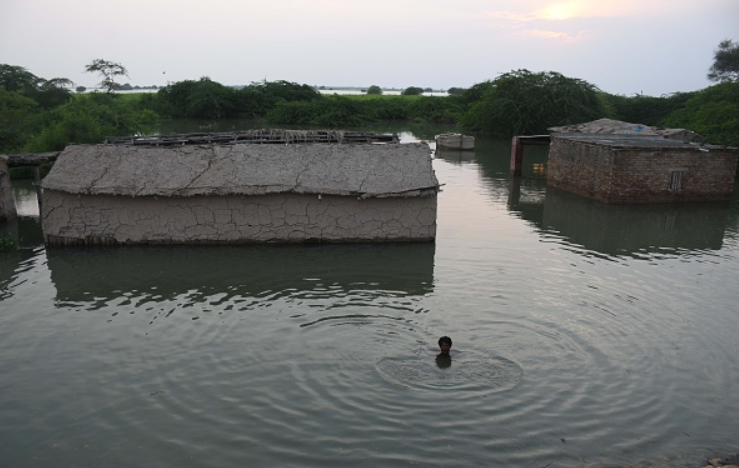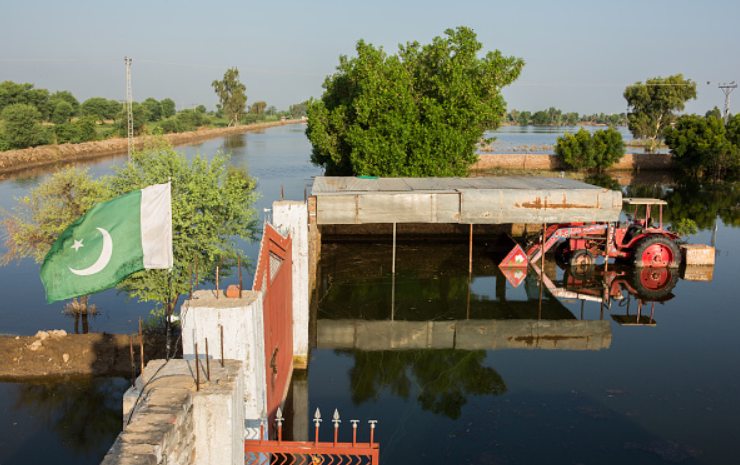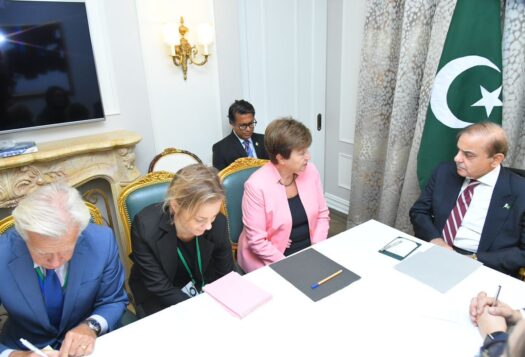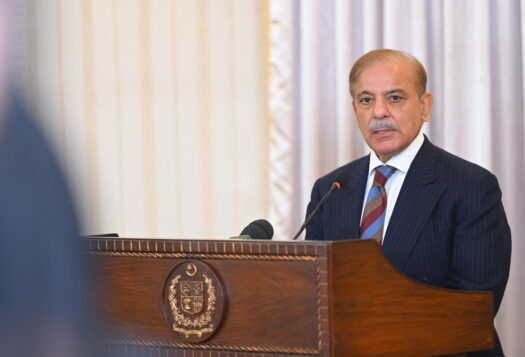
Over the past month, Pakistan has been hit by the worst flooding in the country’s modern history. The floods have put “one-third of the country underwater” and the deaths of close to 1,500 people. Estimates note a further 33 million people have been impacted by the flooding, roughly about 15 percent of Pakistan’s population. Figures as of September 16th estimate that 12,718 kilometers of roads, 390 bridges and over 1.8 million homes have been destroyed. The government’s early estimates place the damage at more than USD $10 billion. With many of the flood-hit regions are still submerged in flood water and cut off from the rest of the country, it is expected that the actual damage will be much more than these early estimates.
The Immediate Costs to an Economy Already in Crisis
Prior to the floods, Pakistan was already facing a severe economic crisis; it was struggling with maintaining a healthy balance of payments and an ever-increasing current account deficit. The country was barely recovering from the aftershocks of the pandemic and the impact of global supply chain disruptions. Pakistan has been on the IMF bailout program since 2019, and its population has been hard hit by strict austerity measures taken as a condition of the bailout. In August Pakistanis were faced with not just the floods but a projected 24-27 percent inflation rate linked to the removal of oil subsidies and an increase in electricity consumption tariffs by the government in order to comply with the IMF conditions.
Damages to the agriculture sector will further add a strain on the country’s limited foreign reserves as cotton, wheat, and vegetables would now have to be imported to meet the domestic demand.
The GDP that was predicted to grow at five percent earlier this year has been scaled down to only two percent for this fiscal year. Perhaps most significantly, Pakistan’s agriculture sector, which contributes 23 percent of the country’s GDP and employs around 38 percent of its labor force has been severely hit by the floods. According to the United Nations, almost 800,000 farm animals and two million acres of crops and orchards have been hit by the floods. Between 80 and 90 percent of Pakistan’s crops have been destroyed, with a particular impact on essential food sources and export items including rice, wheat, sugarcane, mango trees, date palms, and vegetables like chilies, onions, and tomatoes. Cotton crops have also been hard hit. Pakistan is the fifth largest producer of cotton, and its textile industry heavily depends on the domestic cotton produce. Textile exports alone are a major contributor to generating foreign exchange reserves for the country. Damages to the agriculture sector will further add a strain on the country’s limited foreign reserves as cotton, wheat, and vegetables would now have to be imported to meet the domestic demand.
The torrential rains which began in mid-June, have severely affected most of the Sindh province and the arid regions of Balochistan and Southern Punjab. Large parts of Sindh are still submerged in water which will make it difficult for the province to start preparing for the wheat sowing season that usually starts in early October, a month earlier than in Punjab. Sindh is the second-largest wheat producing province in Pakistan. Even before the floods had hit, Pakistan had a shortfall of 2.6 million tons of wheat. As the domestic agriculture produce has been washed away by the floods, the government has warned of a food crisis in the days to come. Prices of onions and tomatoes have already skyrocketed. Food insecurity and malnourishment would increase in a country where 40 percent of the population already faces chronic food insecurity.
The Long-term Impact
Climate change affects communities differently; people of low socio-economic status and marginalized communities suffer the most as they lack the economic capacity and resources to recover from a climate shock. These floods have severely impacted people’s livelihoods, savings and sources of income pushing them further down into poverty. It is expected that the recent floods will push more than 11 million people below the poverty line.
There are additional health concerns as well. There has been an outbreak of diseases like malaria, dengue, diarrhea and cholera in the flooded regions. According to The United Nations Population Fund, at least 650,000 women are pregnant in regions impacted by the flooding out of which 73,000 women are expected to give birth next month. They are in dire need of maternal health care and support in a country where maternal mortality rate is already high. With large parts of the country still under water, providing relief to the flood affected has become challenging. Pakistan spends a large amount of its budget on debt servicing and defense which leaves a meagre amount to be spent on development and health. According to the Pakistan Economic Survey, public sector health expenditure was only around 1.2 percent of GDP in 2020-21. The global outbreak of COVID-19 had already disrupted the delivery of basic health services and now the floods are expected to further worsen the situation.

Internal displacement and migration is already happening with more than half a million people living in relief camps. As climate change shocks become a norm, it is expected more people will migrate from rural areas to the cities in search of livelihoods. This will have serious long-term social and economic problems. Pakistan’s urban centers lack the infrastructure to deal with large-scale migration. As more people migrate to the urban centers, they will put a burden on already limited resources which may lead to higher crime rate and resource-based conflict.
Preparing for Future Climate Shocks
The government of Pakistan needs to take some concrete steps in order to limit the devastation caused by climate change and better prepare itself for any similar climatic catastrophe in the future. Climate change should be the priority of the government in the years to come as it is not only a security threat but also an existential threat to Pakistan. Our cities are becoming unlivable due to rising temperatures while floods are becoming a norm in rural parts of the country. Investments will need to be made in disaster management, sustainable urban and rural development projects, and building an economy that is more inclusive and resilient against climate change.
The government additionally needs to renegotiate the IMF bailout package immediately as the provinces are in no capacity to generate the targeted revenue for this fiscal year. Long-term measures include allocating more resources to climate change adaptation and mitigation. This can include a focus on sustainable urban planning and banning the construction of commercial and residential buildings near the riverbanks. Adapting Pakistan’s agriculture sector to climate change would help avoid the risk of food insecurity in the years to come. While it will be difficult to predict natural disasters, conducting further research on changing weather and temperature patterns and disseminating this information could help farmers plant and harvest their crops accordingly.
Climate change should be the priority of the government in the years to come as it is not only a security threat but also an existential threat to Pakistan.
Pakistan can also create coordination mechanisms between the metrological department and the national and provincial disaster management authorities. Early flood warning systems and evacuation plans need to be designed and implemented to prevent maximum damage and deaths.
Finally, in the aftermath of the devastating flooding Pakistan should actively engage with the international community and climate change organizations to raise awareness about the existential threat it faces due to climate change. Pakistan can fight its case at the upcoming COP-27 conference and argue that despite contributing less than one percent to the global carbon emissions, it’s paying the price of the actions of the developed world. The world needs to recognize that Pakistan—and many other countries without the resources to fully adapt to climate change—cannot tackle this calamity alone.
***


